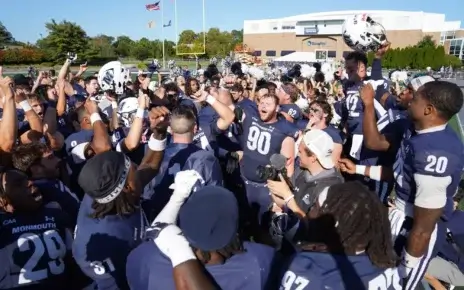Thought you knew NCAA sports? An expert on the ins and outs of the sport? Well that may be all fine and dandy, until the NCAA completely undergoes its conference realignment.
Yes, the NCAA has been in the process of shuffling around teams to different conferences. By the time it’s all said and done, you may not even recognize the structures of the conferences you once knew! So if you’re still anticipating on being that avid follower…better read up on some of these changes to find out who your favorite team may be playing against next year.
The ACC is letting the changes come to it, believing that they may be able to attain UCONN and Notre Dame. On September 18, the conference added Syracuse University and Pittsburgh to its lineup. That increase in the conference lineup could expand to 16 teams, including Rutgers by the time the reshuffling is complete.
In the Big East, similar changes have been baffling fans of late. The next move planned seems hard to read, but according to CollegeSportsInfo.com, the conference is also in a waiting mode. It lost Pitt and Syracuse to the ACC and recently saw the Mountaineers of West Virginia bolt for the Big 12. With Louisville on the chopping board now, its nerve-racking to see what the Big East will do next.
The Big Ten, unlike many other conferences, seems to be doing alright for itself, stabilizing its programs and not really looking to expand, unless it were to incorporate a Fighting Irish program into its midst. If push came to shove and they were forced to change, it’s rumored they would eye schools like Rutgers, Boston College and UCONN as well.
The Big 12 is the epicenter of the conference shifts and holds of a lot of power in its decisions and effects on other conferences. Missouri was asked by the Big 12 to come under its wing, but the Tigers seemed tempted by the offer from the SEC. The conference did add West Virginia University though, a program notoriously seen in the upper rankings in both football and basketball. Brigham Young University is also a consideration for the conference but are flying under the radar as of yet. And all the teams within the conference have been noted as seeking outside opportunities and/or pushing for a change in the conference in itself. For the structure to be what the heads of the conference want, a lot of work must still be done.
Conference USA and the Mountain West have recently developed a football partnership, a further change in the football scene throughout the nation. The group will be a 22 group conference for football. But facing some schools leaving for the Big East, that 22 group number may be more reasonably assumed to be around 16, or if tempted, some schools discontent with the Big East may make the switch over to CUSA.
In the independent field, BYU is being pressed by the Big 12 and Notre Dame is seen as a puzzle piece in the larger puzzle of many other conferences. It is being prematurely pulled into the grasp of many different conferences, but as of now is still weighing its options as an independent team. The Army and Navy are said to have considered making a change to the Big East, which also seems to be in the epicenter of conference shifts.
The Mountain West, partnered with the Conference USA in football, is waiting on the decisions of a handful of teams to determine is future outlook. Either way, they will partake in a substantial amount of good football with the high amount of teams and talent in the new joint conference.
The PAC12 is a conference proudly leaning towards the more stable size, but has fostered ideas such as the Pac14, upon the possible inclusion of Texas and Texas A&M and/or another similar program. But in late September, Texas A&M went to the SEC.
The SEC; the notoriously strong football conference, has tendered offers towards Missouri, who seems close to joining the conference and Texas A&M, who joined the conference in late September.
In our NEC, the conference could be out to obtain Maine and New Hampshire on the football side, and these minor upkeeps seem to be the only behind-the-scenes work going on.
Although countless other transactions have occurred within the NCAA, many of the moves not mentioned are negligible or small, rumored changes. So, looks like we covered most of the major shifts. Seems like the average fan needs to draw a whole new diagram just to stay up-to-date with all the moves. A question of whether the shifts are beneficial to the sport can only be answered by time, and almost assuredly, by the end of the 2012 season, we’ll see a lot of change in place.
If you’re looking to take up a new sport, remember it’s not just knowing the basic rules for on the field, or memorizing the roster like the back of your hand…it just may also include memorizing which conference your team may be thrust towards and the opponents within that conference that are in the same boat. NCAA sports are in a transitional stage and these conference realignments are the first step in a wave of changes; hopefully all for the better.



